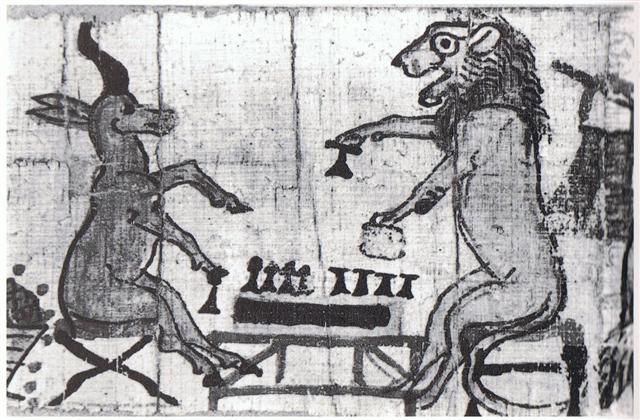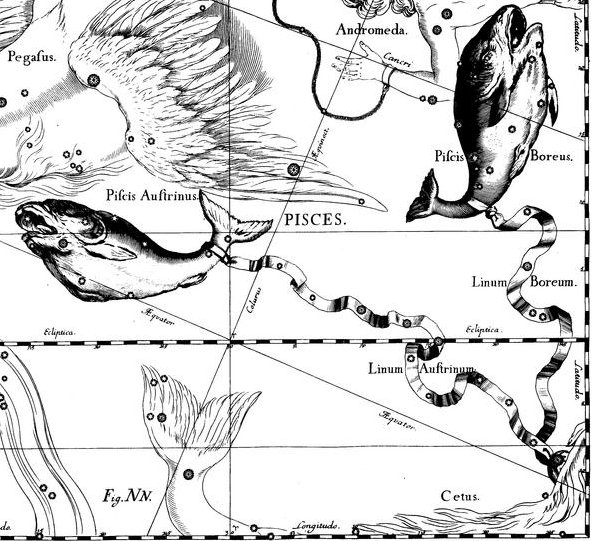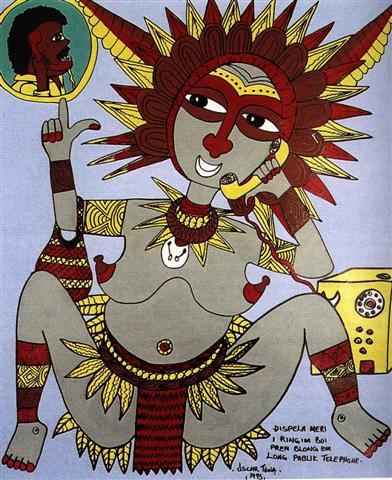Although Sirius currently is at the nose of the Great Dog
and close to the center of the Egyptian X the precession is
pushing
the Sun - and therefore simultaneously also Sirius - earlier
and earlier as viewed against the established background of
the night sky.
... The Sothic cycle was based on what is
referred to in technical jargon as 'the periodic return of
the heliacal rising of Sirius', which is the first
appearance of this star after a seasonal absence, rising at
dawn just ahead of the sun in the eastern portion of the
sky. In the case of Sirius the interval between one such
rising and the next amounts to exactly 365.25 days -
a mathematically harmonious figure, uncomplicated by further
decimal points, which is just twelve minutes longer than the
duration of the solar year ... In ancient Egypt they thought
Sirius was behind the yearly rise of the Nile ... the
seasonal cycle, throughout the ancient world, was the
foremost sign of rebirth following death, and in Egypt the
chronometer of this cycle was the annual flooding of the
Nile ...
This might be the reason for why in the C text what looks
like the Egyptian X has no central star:

And the special character of Betelgeuze might explain why the
star at top left is slightly greater (and sagging as if from
old age) than the other 3.
|
BET-EL-GEUZE |
α Orionis |
0.58 |
07° 24′ N |
88.3 |
June 17 |
168 = 24 weeks |
|
CANOPUS |
α Carinae |
-0.72 |
52° 40′ S |
95.6 |
June 24 |
175 = 25 weeks |
|
5 days |
|
SIRIUS |
α Canis
Majoris |
-1.46 |
16° 39′ S |
101.2 |
June 30 |
181 (= 175 + 6) |
|
NAOS |
ζ Puppis |
2.21 |
39° 52′ S |
121.3 |
July 20 |
201 (= 181 +
20) |
Where should such a glyph be located in the texts?
Presumably not at Betelgeuze but at his 'end game' so to
say.


8 * 8 + 8 * 8 + 6 * 6 = 164
8 * 8 + 14 * 14 = 260
Betelgeuze was located at the Milky Way River and here the
flow might have run aground.
.jpg)
My table above suggests Canopus (α)
should be the terminal star. This idea is supported by
history:
... Eridhu, or Eri-duga, the Holy City,
Nunki, or Nunpe, one of the oldest cities in the world, even
in ancient Babylonia, was that kingdom's flourishing port on
the Persian Gulf, but, by the encroachment of the delta, its
site is now one hundred miles inland. In its vicinity the
Babylonians located their sacred Tree of Life ...
On the other hand, the central piece of the 'backbone awash
in the surf' should be Drus (Hard):
... The hull of the canoe was regarded as
the backbone of their chief. In laments for dead chiefs, the
deceased are often compared to broken canoes awash in the
surf ...
|
THE OAK HULL
(BACKBONE) |
|
Canopus |
α |
365 |
52° 40′ S |
-0.72 |
95 |
|
Drus |
χ |
270 |
52° 59′ S |
3.46 |
zero |
|
Avior |
ε |
325 |
59º 31' S |
1.86 |
55 |
|
20 * 48 = 365 +
270 + 325 = 40 * 24 |
... In Roman
times the Sun would have risen together with the Hard (like
Oak) star (Drus) in 'June 21 = the solstice day:
|
DRUS |
|
MAY 15 (500) |
22 |
"June 7 (158) |
13 |
'June 21 (172) |
22 |
°July 14 (195) |
3 |
July 18 (199) |
Assuming the ancient correct position of
Drus should have been in the day before the northern
Gregorian spring equinox,
... Ecclesiastically, the equinox is
reckoned to be on 21 March (even though the equinox occurs,
astronomically speaking, on 20 March in most years)
...
we could count 172 ('June 21) - 79
('March 20) = 93 precessional days. Although we should
reduce with 16 days because anciently they waited for the
return to visibility of the relevant star.
(93 - 16) / 365¼ * 26000 years = 5481 =
1842 AD + 3639 BC.
However, we ought to rely on the Mayans
who had a good grip on time and had defined the day of
Creation to be in the year 3114 BC = 525 years later than
3639 BC ...
Huki 1. Pole attached to the poop from which the
fishing-net is suspended: huki kupega. 2. Digging
stick. 3. To set vertically, to stand (vt.).
4. Huki á te mahina, said of the new moon when both
its horns have become visible. Vanaga. 1. To post up, to
publish. 2. To cut the throat (uki). Mq.: Small
sticks which close up the ridge of a house. Ha.: hui,
the small uniting sticks in a thatched house. Churchill.
Standing upright. Barthel. M. Spit for roasting. Te Huki,
a constellation. Makemson. Hukihuki. 1. Colic. 2. To
transpierce, a pricking. 3. To sink to the bottom.
Churchill.
|
BET-EL-GEUZE |
α Orionis |
0.58 |
07° 24′ N |
88.3 |
June 17 |
168 = 13 + 11
weeks |
|
CANOPUS |
α Carinae |
-0.72 |
52° 40′ S |
95.6 |
June 24 |
175 = 25 weeks |
|
5 days |
|
SIRIUS |
α Canis
Majoris |
-1.46 |
16° 39′ S |
101.2 |
June 30 |
181 (= 175 + 6) |
|
DRUS |
χ Carinae
|
3.46 |
52° 59′ S |
119.9 |
July 18
|
199 (= 175 +
24) |
|
NAOS |
ζ Puppis |
2.21 |
39° 52′ S |
121.3 |
July 20 |
201 (= 175 +
26) |
Drus (as in druid) was evidently the essential part
of the fallen old chief, awash in the surf.
... together they found all of
Osiris save his genital member, which had been swallowed by
a fish ...
|
 |
|
Ga4-21
(104) |
|
AL SHARAS
(*168) |
|
23h (*350.0) |
|
 |
48 |
 |
|
Ca5-14 (119) |
Cb6-27 (534 =
366 + 168) |
|
DRUS (*119) |
AL SHARAS
(*168) |
|
*301 |
23h (*350.0) |
 |
 |
 |
 |
 |
|
Cb6-27 |
Cb6-28 |
Cb6-29
(536) |
Cb7-1 |
Cb7-2 (2
* 73) |
| kua tupu
te kihikihi |
ku kikiu |
te henua |
Te
hokohuki |
te moko |
Kihikihi, lichen; also: grey,
greenish grey, ashen. Vanaga.
Kihikihi, lichen T, stone T.
Churchill. The
Hawaiian day was divided in three
general parts, like that of the early
Greeks and Latins, - morning, noon, and
afternoon - Kakahi-aka, breaking
the shadows, scil. of night;
Awakea, for Ao-akea, the
plain full day; and Auina-la, the
decline of the day.
The lapse of the
night, however, was noted by five
stations, if I may say so, and four
intervals of time, viz.: (1.) Kihi,
at 6 P.M., or about sunset; (2.) Pili,
between sunset and midnight; (3) Kau,
indicating midnight; (4.) Pilipuka,
between midnight and surise, or about 3
A.M.; (5.) Kihipuka,
corresponding to sunrise, or about 6
A.M. ... (Fornander)
Tupu.
1.
Shoot, sprout, bud; to sprout, to bud. 2.
Pregnant: vî'e tupu (o te poki); to
be conceived (of fetus in its mother's
womb): he-tupu te poki i roto i te kopú o
toona matu'a. Vanaga. To grow, to
sprout, to germinate, to come forth, to
conceive, pregnant, germ; mea tupu,
plant; tupu ke avai, of rapid growth;
tupu horahorau, precocious;
hakatupu, to produce, to stimulate
growth, to excite. P Pau.: fakatupu,
to raise up, to create. Mgv.: tupu,
to grow, to conceive, to be pregnant. Mq.:
tupu, to grow, to sprout, to
conceive. Ta.: tupu, to grow, to
sprout. Churchill. Mgv.: Tupu, the
best or worst, used of men or of bad
qualities. Sa.: tupu, king. Ma.:
tupu, social position, dignity.
Churchill.
 |
|
CLOSE TO THE SUN: |
|
'Aug 9 |
10 |
11 |
12 |
13 (225) |
|
AL SHARAS (The Ribs) =
β
Crateris
(168.6) |
Al Zubrah-9 (Mane) /
Purva Phalguni-11 (First Reddish One - Fig
Tree)
ZOSMA (Girdle, not Belt)
=
δ
Leonis
(169.2),
COXA (Hips)
=
θ
Leonis
(169.4)
*169.4 - *41.4 = *128.0 |
φ
Leonis (170.0),
ALULA (First Spring of the Gazelle)
=
ξ,
ν
Ursae Majoris
(170.5),
LABRUM =
δ
Crateris
(170.6) |
σ
Leonis (171.1),
λ
Crateris (171.6),
ι
Leonis,
ε
Crateris (171.9) |
γ
Crateris, π
Centauri (172.0),
κ
Crateris (172.5),
τ
Leonis (172.8)
GREDI
(α Capricorni) |
|
... God created Eve from
one of Adam's ribs and therefore I at first
tried to translate the female (β)
star name Al Sharas with The Rib.
Although according to Allen this star was
plural: '... β ...
was one of Al Tizini's Al Sharāsīf,
the Ribs, - i.e. of the Hydra, - and the
first of the set.' Adam had, as I remember
it, another wife before Eve, viz. Lilith
...
 |
|
CLOSE TO THE FULL MOON: |
|
'Febr 8 |
9 (40) |
10 (68 -
27) |
11 (434 - 27) |
12
(408) |
|
23h (350.0 = 167.4 + 182.6)
υ, θ Gruis (350.0), π Cephei (350.6), ι
Gruis (350.9) |
SIMMAH = γ Piscium
(351.7) |
φ Aquarii (352.0), ψ Aquarii (352.4), χ
Aquarii (352.6), γ Tucanae (352.8) |
CROSS-BARS |
|
ο Cephei (353.3),
KERB
(Bucket Rope)
= τ Pegasi
(353.6) |
κ Piscium (354.2), θ Piscium (354.4), υ
Pegasi (354.9)
*313.0 = *354.4 - *41.4 |
|
The name Simmah for
γ
at the corner of the mouth of the Southern
Fish suggests the Tamil name Simham
for the Lion → Simba, Singha,
Singapore ('City of the Lion').

...
τ, 4.5, with
υ, was Al Sufi's
Sa'd al Na'amah, which Knobel thinks
should be Al Na'āim, the Cross-bars
over a well; but they also were known as
Al Karab, the Bucket-rope. The usual
titles for τ -
Markab and Sagma or Salma
- are from Bayer, but the last two should be
Salm, a Leathern Bucket
...

... With
α
Andromedae [Sirrah → Navel] and
γ
Pegasi [Kerb], as the Three Guides,
it [Caph → Phoenician Kaph, Hand] marks the
equinoctial colure, itself exceedingly close
to that great circle; and, being located on
the same side of the pole as is Polaris, it
always affords an approximate indication of
the latter's position with respect to that
point. This same location, 32º from the
pole, and very near to the prime meridian,
has rendered it useful for marking sidereal
time. When above Polaris and nearest the
zenith the astronomical day begins at 0
hours, 0 minutes, and 0 seconds; when due
west the sidereal time is 6 hours; when
south and nearest the horizon, 12 hours, and
when east, 18 hours; this celestial
clockhand then moving on the heavenly dial
contrary to the motion of the hands of our
terrestrial clocks, and at but one half the
speed ... |
There were 49 (= 7 * 7) right ascension days from
Drus to Al Sharas (*119 + *49 = *168). This distance could
correspond to the number of notches on the back side of the mammoth ivory
tablet:
... A further 49 notches on side B are
arranged in four vertical lines of 13, 10, 12 and 13
respectively plus a further notch that could be in
either of the middle two lines ...
.
At bottom on side B
there has been left an empty space and here the distance
between the pair of central columns are set widely apart
- suggesting a place of birth for the notch which
could belong either to the leg at left or that to the right.
|
MAY 15 (500) |
48 |
JULY 3 (9 * 61) |
|
 |
 |
|
Ca5-14 (119) |
Cb6-27 (534 =
366 + 168) |
|
DRUS (*119) |
AL SHARAS
(*168) |
|
*301 |
23h (*350.0) |

|


.jpg)











